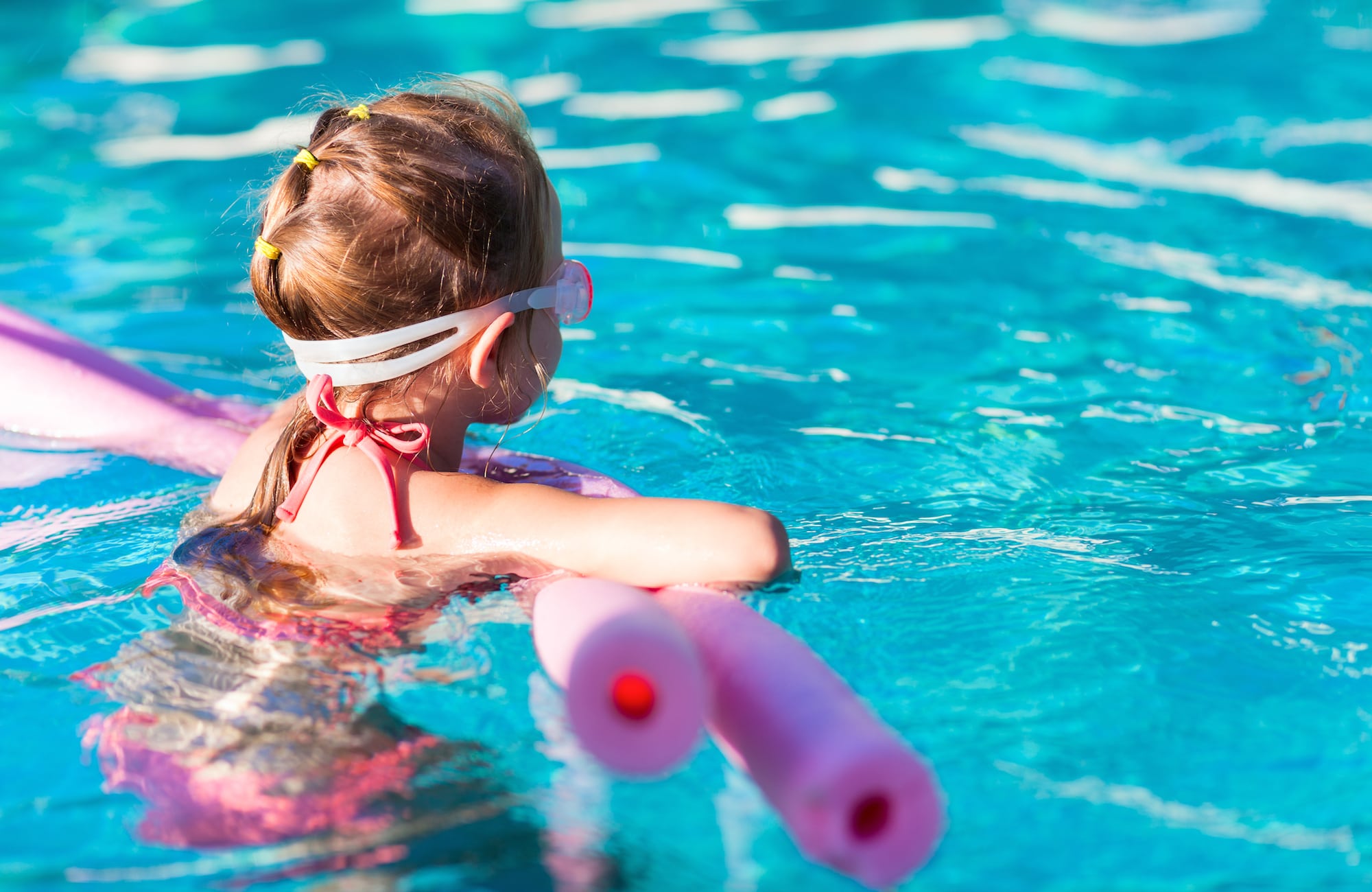With temperatures in the 80s for what seems like a never-ending number of days, the pool is a great way to cool down. However, pool safety should be your family’s number one priority, whether you have a backyard pool, splash in the kiddie pool or visit a community pool. Water safety is essential at home, friends’ houses, the neighborhood pool and water parks, as well as in natural water like lakes and rivers.
Follow these pool safety tips to keep your kids safe in the pool:
Supervise without Distractions
Watching your kids in the water should be your only task. We know moms are multitasking experts, but this is not the time to divide your attention between tasks. Set down your phone or book to keep kids safe in the pool. Infants and toddlers should never be beyond arm’s reach of an adult.
Minimize Drain Danger
Many pools have a single drain with suction strong enough to keep a child underwater. To minimize the risk of a drain, use drain covers compliant with the Virginia Graeme Baker Pool & Spa Safety Act. Kids should be taught to avoid drains when possible.
Newer pools are often designed with several smaller drains that each pulls a limited amount of water. This means the suction at each drain is less, making the pool safer for kids.
Enroll in Swimming Lessons
Your kids can start enjoying the pool as young as 6 months. Around age 4, kids should be enrolled in swimming lessons. Even basic skills can help kids stay safe in the pool. Make sure your kids can perform these skills before letting them out of arm’s reach:
- Jump into the water and return to the surface
- Float and tread water
- Turn in a full circle (to find an exit)
- Exit the pool without a ladder
- Swim to the nearest exit
Use Life Jackets
Keep kids safe in the water with a well-fitting Coast Guard-approved life jacket. Find a design that helps your smaller family members keep their heads above water. Use height and weight recommendations to choose the right size and test new life vests before heading to the water. Inspect life jackets and other flotation devices at the beginning of each swimming season (and after any major growth spurts) to make sure they still float and fit properly.
Inflatable “floaties,” “noodles” and other pool toys are no substitute for a life vest that fits your child properly.
Keep Kids Away from the Pool
Unless there’s an adult available to supervise, kids shouldn’t be in, or even near, the pool. The majority of childhood drowning cases occur when the child was not supposed to be in or around the pool.
You can lessen the risk of a backyard pool by installing secure fencing, alarms (either on your home’s doors or on gates around the pool), safety covers and safety nets. Even kiddie pools require thinking about safety. Drain kiddie pools and position them so they can’t catch rainwater after each use because little children can drown in very small amounts of water.



